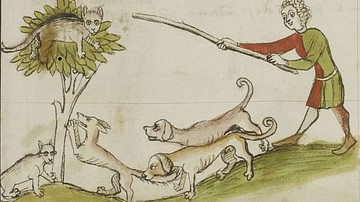Step back in time and immerse yourself in the captivating world of cats during the Middle Ages. These enigmatic creatures held a unique place in society, revered for their mysterious nature and valued for their practical contributions. From companionship to pest control, cats played an integral role in shaping medieval life.
A Symbol of Mystery and Magic
In an era steeped with superstition and folklore, cats were often associated with magic and mystery. Their nocturnal habits and ability to navigate darkness made them intriguing figures, believed to possess supernatural powers. Tales of witches transforming into felines only added to their mystique, fueling both fear and fascination among the populace.
Pest Control Extraordinaire
Beyond their mythical allure, cats proved themselves as indispensable allies against vermin infestations that plagued medieval communities. With rats spreading disease throughout towns, these agile hunters became essential protectors of human health. Their stealthy pounce ensured that grain stores remained free from destructive rodents while safeguarding precious food supplies during times of scarcity.
Companionship Amidst Solitude
In an age where solitude was commonplace due to long hours spent laboring or studying within monastic walls, cats provided much-needed companionship for monks and scholars alike. These solitary souls found solace in the gentle purring vibrations emanating from a feline friend nestled on their laps as they delved into ancient texts or contemplated life’s mysteries.
The Enduring Legacy
As we reflect upon this fascinating period in history, it becomes evident that our modern-day appreciation for these graceful creatures is deeply rooted in our shared past. The Middle Ages witnessed the rise of cat admiration through their symbolism, practicality, and companionship. Today, cats continue to captivate our hearts, reminding us of their timeless allure and the enduring bond between humans and felines.


